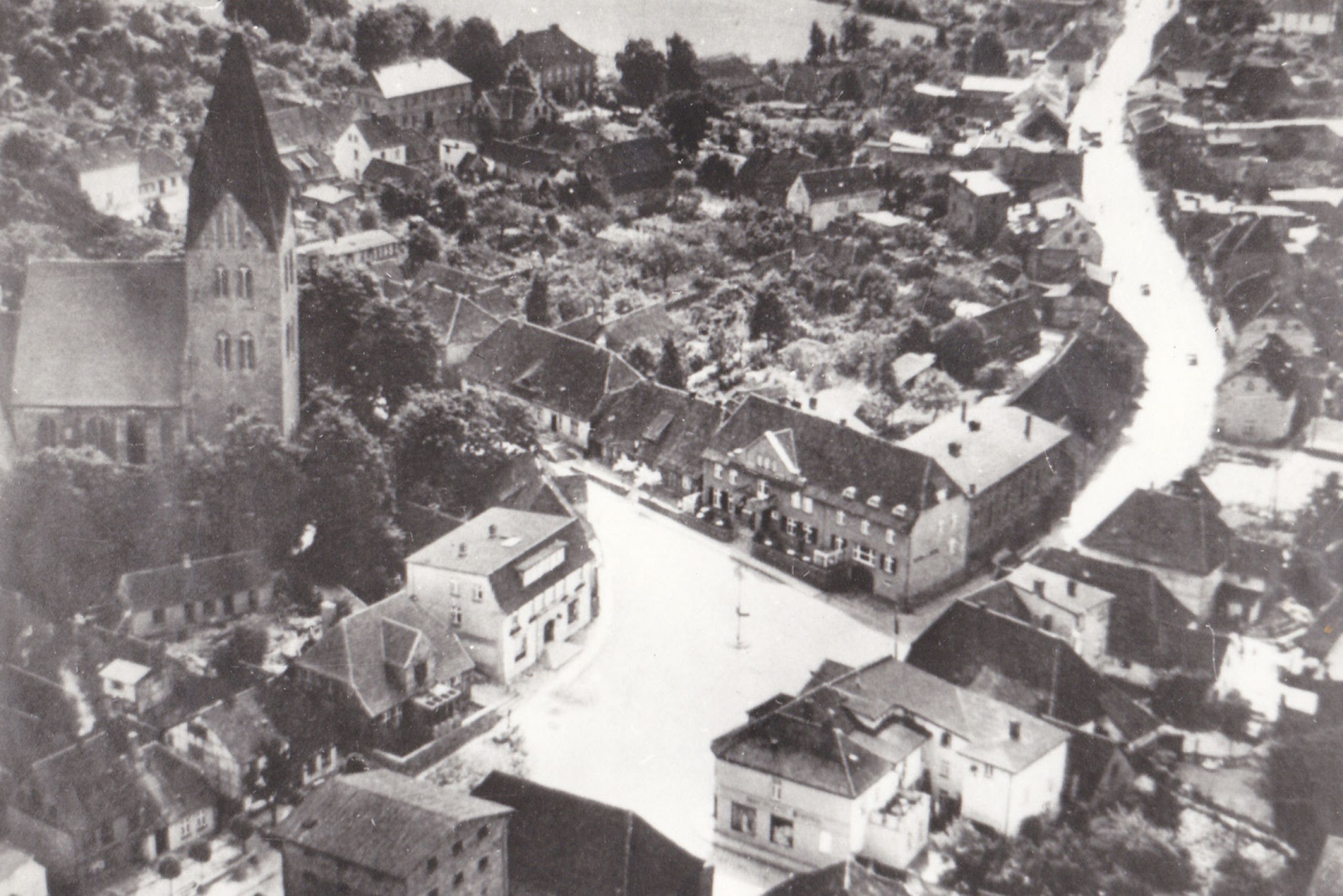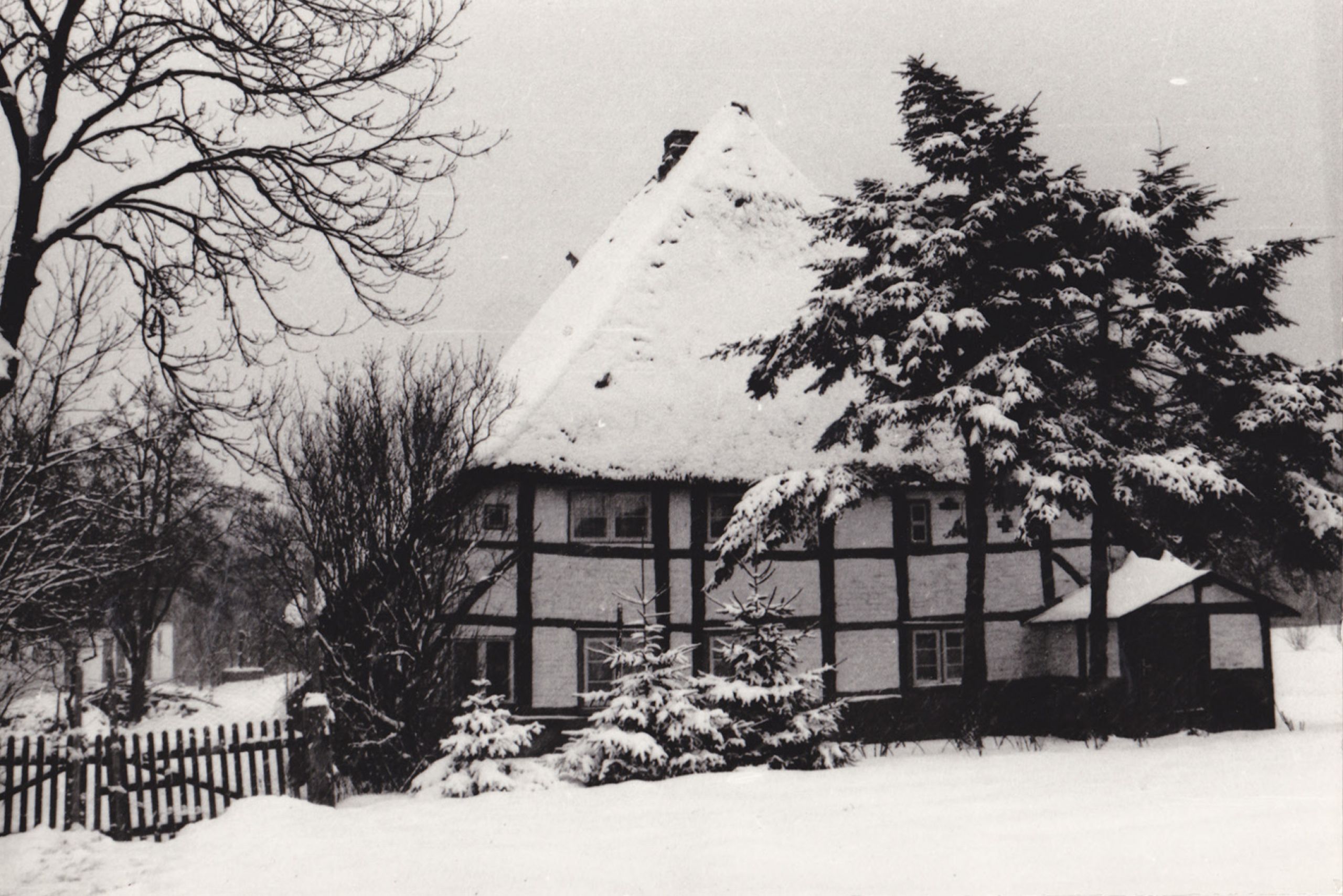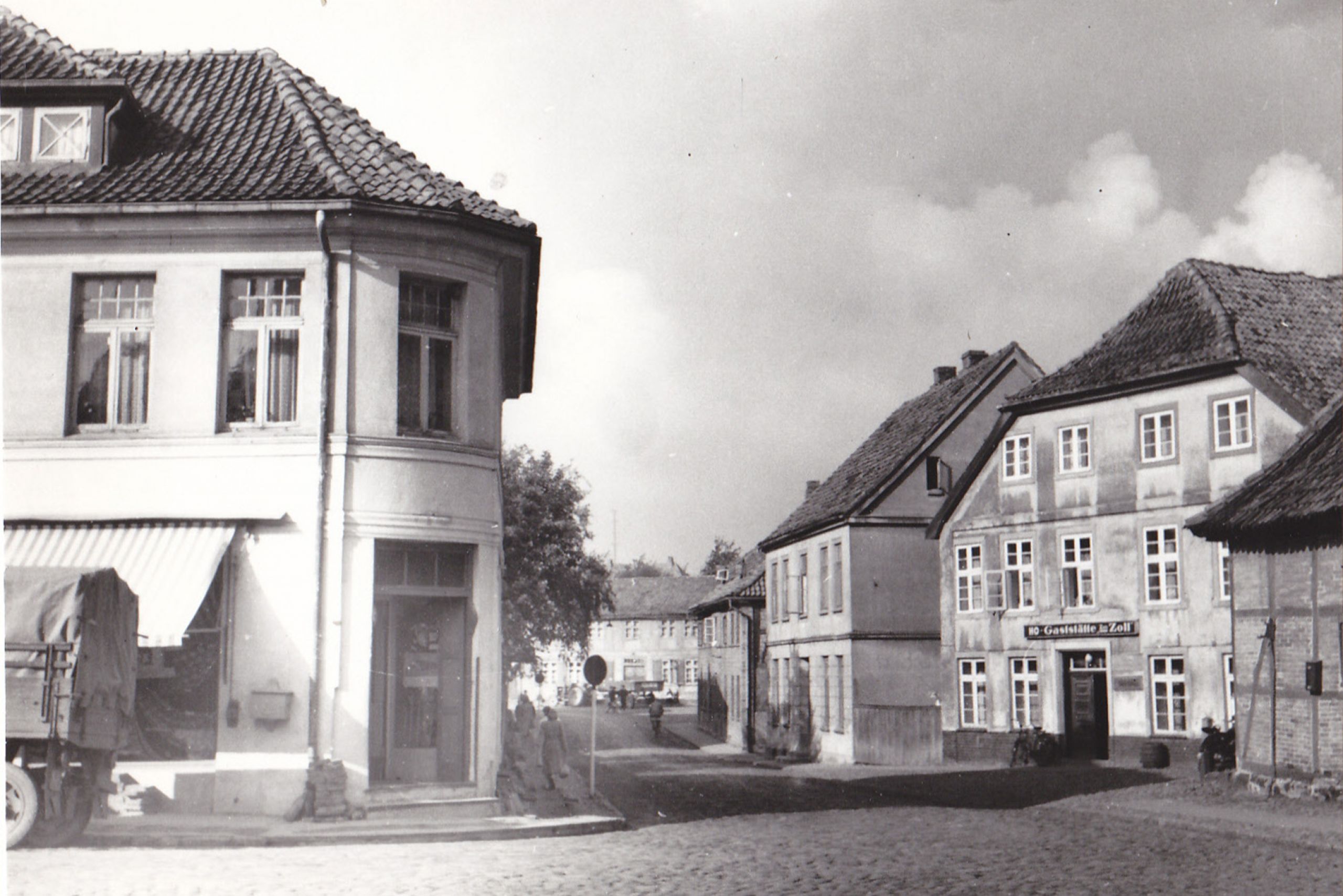The town of Klütz boasts a fascinating history spanning more than 800 years, closely intertwined with major global events.
Today, this small town is home to approximately 3,150 residents who benefit from its attractive location near the Baltic Sea, picturesque nature and a charmingly designed city center that has undergone extensive renovations over the past 30 years.
Architectural Monuments in Klütz
Historical architectural monuments define the cityscape of Klütz, narrating the centuries during which the town witnessed the rule of nobility, the presence of craftsmen, farmers and flourishing trade between Lübeck and Wismar—a process that facilitated the transformation from a market town to a city. Many of these protected buildings are now privately owned, lovingly restored and carefully repurposed for contemporary use. Prominent architectural monuments include the impressive Bothmer Castle, the Literature House "Uwe Johnson," the venerable St. Marien Church and the Klützer Mill.
25 Years of Urban Renewal
Another chapter in the tow's history unfolds during the period from 1992 to 2017 when Klütz's historic structures underwent careful renewal through urban development funding. A comprehensive brochure titled „Stadterneuerung Klütz – Schloßstadt Klütz" (“Urban Renewal Klütz – Klütz Castle Town”) containing detailed information about the implementation and the renovated buildings, is available at the Klütz city information center.
Historical Insights into Klütz
Regional historian Eckart Redersborg, known for numerous books and publications on local history, has contributed to the history of Klütz from its origins to the present on the Klütz website
"Klütz?"—This question will arise for anyone who, for whatever reason, contemplates the place name. The answer should be "Klütz!" Because, time and again, over more than 800 years, this question has been asked. The historical development set in motion by this question affirmed the answer: "Klütz!"
At the end of the 12th century, Emperor Frederick II, also known as Barbarossa, required a substantial amount of timber for the future Hanseatic city of Lübeck. The wealth of timber in the eastern silva clutse, the Klütz Forest, characterized by extensive oak and beech stands, was recognized. The wood could be used for construction purposes. The "Barbarossa Document" contains the first historical mention of silva Cliuz (silva clutse). If the forest area bore the name "Klütz," it must have received its name from an existing location. The Slavic word "cliuz" means "key." Klütz was, therefore, the key to unlocking the Klütz Forest.
For the transport of heavy timber, the nearby Baltic Sea or the nearby Dassower See with its tributary to the Trave River offered suitable options. The banks of the Trave and Dassower See were designated as the border between Lübeck and Mecklenburg by the "Barbarossa Document." This border persists to this day and, in the second half of the 20th century, was even the state border between East and West Germany. Significant German history on the edge of the silva clutse!
Klütz was a typical Slavic settlement. A larger lake at that time, the Paeserow, provided opportunities for fishing. A flowing watercourse, the Klützer Bach, cut through the hilly landscape in a northerly direction toward the Baltic Sea, serving as a waterway. The Slavs settled on both sides of the creek and utilized the adjacent areas for agriculture. East of the creek, the street "Im Thurow" might indicate the oldest settlement. Just three decades ago, this dead-end street was not particularly attractive, but extensive restoration work transformed it into a gem, featuring the 2006-opened Literature House "Uwe Johnson" and the Schmoldt Perennial Nursery, known as "Klützer Blumenkate."
From the "Klütz Forrest" to the Klützer Winkel
Under Henry the Lion, in the 12th century, Eastward expansion began, focusing on Slavic territories, including those around Klütz. Cleared forest areas transformed into large, agriculturally usable areas where settlers from Lower Saxony and Westphalia established new villages. The no longer accurate name "Klütz Forest" changed to "Klützer Winkel," which, due to its highly fertile soils, especially in the 19th/20th century, became a distinctive hallmark through the cultivation of wheat and sugar beets.
In addition to existing Slavic settlements, recognizable by endings like -in, -ow, or -itz, new villages had emerged before 1230, identifiable since then by endings like -hagen or -beck. The observant visitor to the Klützer Winkel will discover a series of place names of Slavic or German origin.
The colonization was also associated with the Christianization of the Klütz Forest. Churches had to be built as centers of ecclesiastical power. Klütz? This location was particularly suitable for building a church due to its central position. Thus, the present-day St. Mary's Church emerged on a hill in the midst of the former village. There is hardly a more favorable location within the Klützer Winkel.
Defining the territory of the Klützer Winkel is challenging through geographical features but can be done with the help of the 56-meter-high, widely visible church tower. Folk wisdom provided an explanation. The Klützer Winkel is the area from which "one sees the Klütz church tower!" And so it is, with few exceptions! The Klützer Winkel stretches unparalleled between the church villages of Kalkhorst and Elmenhorst to the west and Hohenkirchen to the east. Approaching from the south, one glimpses the Klützer church tower at the exit of Rolofshagen, reaching the Klützer Winkel. To the north, the Baltic Sea, in the area of Steinbeck and with the Boltenhagener Bucht and Wohlenberger Wiek, delimits the Klützer Winkel.
The Knights rule in the Klützer Winkel
For centuries, life unfolded under the influence of chivalry in the Klützer Winkel, transforming free peasants into serfs. The knightly families Bülow, Penz and Plessen played a role in this transformation, as indicated by the coat of arms on the pulpit of the Klützer Church. For over 300 years, the Plessen family, in particular, was influential in large parts of the Klützer Winkel.
The knightly families remained settled for centuries, shaping the economy and living conditions. At times, they behaved as robbers, posing a threat to land trade between the Hanseatic cities of Lübeck and Wismar. Between Klütz and Dassow alone, five castle complexes are documented over a distance of about 15 km. The remains of "Burg Arpshagen" with its ring-shaped moat and elevated castle site are still a tourist attraction today.
The estate villages were marked by the contrast between the manors with their parks and the secluded residences of the rural population. In the 19th century, "Katen," houses with four, five, or six apartments, were built for them. Manor houses, parks and Katen have undergone various restoration measures in recent decades, presenting a friendly appearance and, in some cases, receiving new purposes. In the Klützer Winkel, especially Schloss Bothmer and the manor houses Oberhof and Stellshagen are worth seeing and offer diverse experiences. Former laborers' cottages, such as those in Arpshagen, Christinenfeld, Goldbeck and Hofzumfelde, now provide a picturesque view and modern living conditions.
Reformation and Thirty Years' War
Life in the Klützer Winkel did not unfold in isolation from world events. Profound changes occurred from 1540 onwards due to the Reformation. Since then, the Klützer Church, with its beautiful "Bischofsmütze" (bishop's cap), four bells and valuable interior, has developed into one of the most beautiful churches in northwest Mecklenburg, inviting visitors to various events.
The Thirty Years' War brought terror, destruction and looting to the Klützer Winkel. Afterward, new life had to painstakingly develop, especially in Klütz. But since 1660, the town has a diverse crafts industry, which was not typical outside cities. Crafts and small trade promoted life and living
The "Klützer Markt" (Klütz Market) took place annually, marking the end of harvest around October 1. Local residents offered their services and products, benefiting the population of surrounding villages, covering their daily needs with various services. From then on, Klütz was designated a "Flecken" (market town), a designation that remained contested but paid off in the following decades. The "Klützer Markt" formed a special social event in the Klützer Winkel for over two centuries, fondly remembered by modern Klütz, which continues to connect with it in a different form, particularly appealing to the guests of the Klützer Winkel.
The times remained warlike. During the Northern War (1700 to 1721), troops from the Electorate of Hanover occupied West Mecklenburg, including the Klützer Winkel. They participated, along with other forces, in the siege of Wismar, a Swedish city since 1648. Thus, the Bothmer family gained access to the Klützer Winkel.
The Counts of Bothmer in the Klützer Winkel
Klütz? Klütz! When the town of Klütz became interesting for the Bothmer family in 1721, they quickly decided to recognize the advantages of this centrally located place in the Klützer Winkel. They acquired an estate of about 8,000 hectares, roughly half of the Klützer Winkel, creating a series of estates managed by tenants. Their property was a majorat, inheritable only through male succession and had to remain undivided.
The first majorat lord was Hans Caspar Count of Bothmer, counted among the "kingmakers" of George I, King of Great Britain. His London address is almost universally known without directly linking it to the name Bothmer: 10 Downing Street, London.
When Hans Caspar Count of Bothmer considered a possible residence in his Mecklenburg possession, he may have asked himself: Klütz? He made a good decision. Located at the southern edge of the town on "Paeserow," between 1726 and 1731, he had a castle and park built, unparalleled in Mecklenburg. Tragically, he probably did not see it in its completed state. When the complex was finished, he had no time to visit his Mecklenburg property. He died in 1732.
The majorat of the Counts of Bothmer lasted for more than 200 years, until social changes during the Weimar era led to its decline and its remnants were completely destroyed with the land reform of 1945.
The Counts of Bothmer likely recognized the value of the developed craftsmanship in Klütz. They fostered development in the Klützer Winkel, giving rise to new crafts and businesses. A brickyard established in Hofzumfelde was crucial, supplying bricks not only for the construction of Schloss Bothmer but also for other buildings, such as the rectory in Klütz. A brewery was established in Arpshagen, the latter existing until around 1878, while the brickyard continued until the turning point in 1990, approximately 270 years. Hofzumfelde, the economic center of the estate, the "Hof zum Feld" (farm to the field), was and is directly accessible from the castle through the unique Festonallee.
The majorat lords persistently advocated for the preservation of Klützer Marktgerechtigkeit (market rights), recognized around 1850. In various ways, the majorat also had a beneficial impact, inspired by developments in the Kingdom of England. The living conditions of their subjects improved, including in education. In Klütz, the then most modern school building within the Ritterschaftliches Amt Grevesmühlen was built for the school mentioned a century ago in 1884. One-room schools existed for 100 years in the majorat villages Brook, Elmenhorst, Gutow, Hohen Schönberg, Moor, Oberhof and Parin, where one teacher taught up to eight grade levels in a single room. But that's how it was in Mecklenburg until the 20th century!
Wind and water mills dominated the landscape of the Klützer Winkel. In addition to the manors and houses in Bothmer, Brook, Oberhof, Parin and Stellshagen, there were several leaseholders in Elmenhorst, Gutow, Hohen Schönberg, Kussow, Steinbeck and Tarnewitzerhagen, some of whom operated their farms for several generations, as well as Büdner, who often combined their small agriculture with a forge and an attached tavern or another craft, such as that of the cobbler.
The development continued. As improvements in transportation became necessary due to advancing economic development, the question arose again: Klütz? And again, the decision was positive: Klütz!
Tolls were collected on the Klützer Bach for centuries, now only remembered by the inscription "Zum Zoll" at a former inn. Country roads were built, initially leading to and from Wismar or Grevesmühlen, before the continuous Chaussee leading through Kalkhorst towards Kalkhorst was established only in the 20th century. These connections were primarily important for the country estates.
"Klützer Kaffeebrenner" ("Klützer Coffee Roaster" - a narrow-gauge railway)
This also applied to the construction of a standard-gauge railway that was supposed to connect the Klützer Winkel, starting from Grevesmühlen. Klütz?
Once again, the decision was made: Klütz! In 1905, the first train reached the Klütz station. This railway connection also had significant importance for adjacent goods, as its longer, curved route from Grevesmühlen to Klütz can explain.
In 1994, the "Klützer Kaffeebrenner" (Klütz Coffee Roaster), as it was affectionately called in colloquial language, ceased its operation. However, in Klütz, it came back to life in 2014 with the narrow-gauge railway "De Lütt Kaffeebrenner," offering rides from Klütz to Reppenhagen from April to October. For this, the Klütz, Stellshagen and Reppenhagen stations were restored to an impressive state. Tourists delight in this unique attraction in West Mecklenburg.
Electricity and gas had also made their way, at least in Klütz. April 1st was to become a fateful date. On April 1, 1921, the town of Klütz gained its independence, freeing itself from the domination of the estate, but also rendering itself largely destitute. It created its own coat of arms, which, however, was only recognized in 1938 and has since been replaced twice.
The town rediscovered its economic strength and traditions. On April 1, 1938, together with several other former Mecklenburg towns, Klütz was granted city rights, but also, with about 1200 inhabitants, the unofficial title of the "Smallest City in Mecklenburg."
Klütz gained significance in other ways as well. Countess Mary von Bothmer, originally from England and of the Catholic faith, had already ensured the construction of a Catholic church on the eastern outskirts of the town in 1931/32. This addressed the religious needs of many Catholic farmworkers who originated from Poland. At that time, it was one of the few new constructions of Catholic churches.
Land reform and LPG "Klützer Winkel" (Agriculture production co-operative)
Profound economic and political changes occurred in the city and its neighboring villages, now districts, after 1945. Bothmer Castle served as a "Kreisfeierabendheim" (district retirement home) for the care of the elderly for almost 50 years, manor houses transformed into residences and the land reform turned new farmers into owners of a few hectares of land. New farmers created houses that still shape the image of some villages today, while the Christinenfeld, Elmenhorstand Oberhof estates developed into efficient state-owned farms (VEG) without being parceled. The collectivization that began in 1952, in the form of Agricultural Production Cooperatives (LPG), led to increasingly larger economic units, with the LPG "Klützer Winkel" eventually managing the majority of this region.
Since then, every year from mid-April to mid-May, the prdominantly blue sky, extensive yellow blooming rapeseed fields and the brick red of visible brick buildings create a colorful picture corresponding to the colors of the Mecklenburg flag: BLUE-YELLOW-RED. But at least in those times, Mecklenburg did not exist!
Social life adapted to these developments. The administrative center of the "Klützer Winkel" office was established in Klütz. Cultural houses, folk dance groups and choirs emerged in Christínenfeld, Elmenhorst and Grundshagen, inviting cultural activities. The Klützer dairy was of particular importance, producing cheese products like "Klützer Gold" or "Babyedamer." However, the latter was more commonly found and purchasable in the displays of Berlin, Leipzig, or Dresden stores, not locally or in the region. The building of the former dairy is now used by several artists and entrepreneurs and its facade humorously sports the slogan "Kein Käse" (No Cheese).
Klützer Mühle (Klützer Windmill)
Dedicated citizens, with the support of local businesses, contributed to the reconstruction of the former Dutch mill in Niederklütz during the years 1976 to 1980. Since then, it has not only shaped the landscape but also enjoyed popularity as a restaurant and viewpoint. In 1980, committed citizens organized a parade during the 750th anniversary of the city of Klütz, which was overwhelming and exemplary for that time.
The education system developed due to ongoing centralization and once again, Klütz benefited from it. A new school with a gymnasium was built and housing construction in block form or as private homes progressed, albeit with persistent shortcomings.
Development after 1989
Then, on November 9, 1989, the turning point came with its profound changes, successfully managed in the last three decades. This is evident to the visitors of the city, especially in the cityscape compared to other Mecklenburg cities of similar size. There is no vacancy; the houses are renovated and restored. Bothmer Castle, after a period of vacancy and subsequent long-term renovation, evolved into the flagship of the city of Klütz and the region. It serves as a destination for growing tourist flows with its museum, restaurant, park, comprehensive moat and the unique Festonallee leading to Hofzumfelde. A large parking lot was created. Among the numerous social highlights held at Bothmer Castle, events of the Festspiele Mecklenburg-Vorpommern stand out. Immediately next to the parking lot is the remarkable memorial for the Counts of Bothmer at the New Cemetery. Bothmer Castle and Hofzumfelde have served as backdrops for film shoots, such as the UFA film "Der Majoratsherr" (The Majorate Lord) and the TV film "Die Flucht” (The Escape).
Manor houses in Oberhof and Stellshagen transformed into hotels. Particularly noteworthy is the Hotel Gutshaus Stellshagen with its branches in Damshagen and Gutshaus Parin. In this listing, the seaside village in Wohlenberg on the Baltic Sea must not be overlooked. It has evolved from an East German company resort into a very special recreational facility.
In addition to "Schloss Bothmer" (stately home) and St. Marienkirche Klütz, the city of Klütz boasts the "Literaturhaus Uwe Johnson" (House of Literature) established in 2006 in a former warehouse. It is a first-class destination not only for literary enthusiasts but also, through its diverse events, for many other visitors. The city information office, located there, provides extensive information about the sights and events in the region. Throughout the entire city center, a variety of different information panels provide interesting facts, contributing information for the increasing number of tourists visiting Klütz. Vacationers can find accommodations in many apartments and holiday resorts in Klütz.
In recent decades, Klütz has expanded and changed in terms of settlement. Numerous new buildings in the form of private homes have emerged on the eastern edge of the city. This also applies to several districts, especially the immediately adjacent Arpshagen. On the northern edge of the city, a commercial area has settled with a gas station, a large shopping center, several supermarkets, the volunteer fire department and a butterfly park. The city of Klütz received a bypass at the eastern city limits in two construction phases.
In 1803, Count von Bothmer set up the first bathing cart on the beach in Boltenhagen. With this, he established the second seaside resort on the Mecklenburg coast after Heiligendamm. Over two centuries, the towns of Klütz and Boltenhagen, as well as the slowly rising Baltic Sea resort of Boltenhagen, have mutually influenced each other in their development. Visitors to the resort find variety in Klütz and Klützer companies benefit from the bathers in Boltenhagen. This will continue to be the case in the future.
In conclusion, the question remains: "Klütz?" The only appropriate answer should be: "Klütz!"






